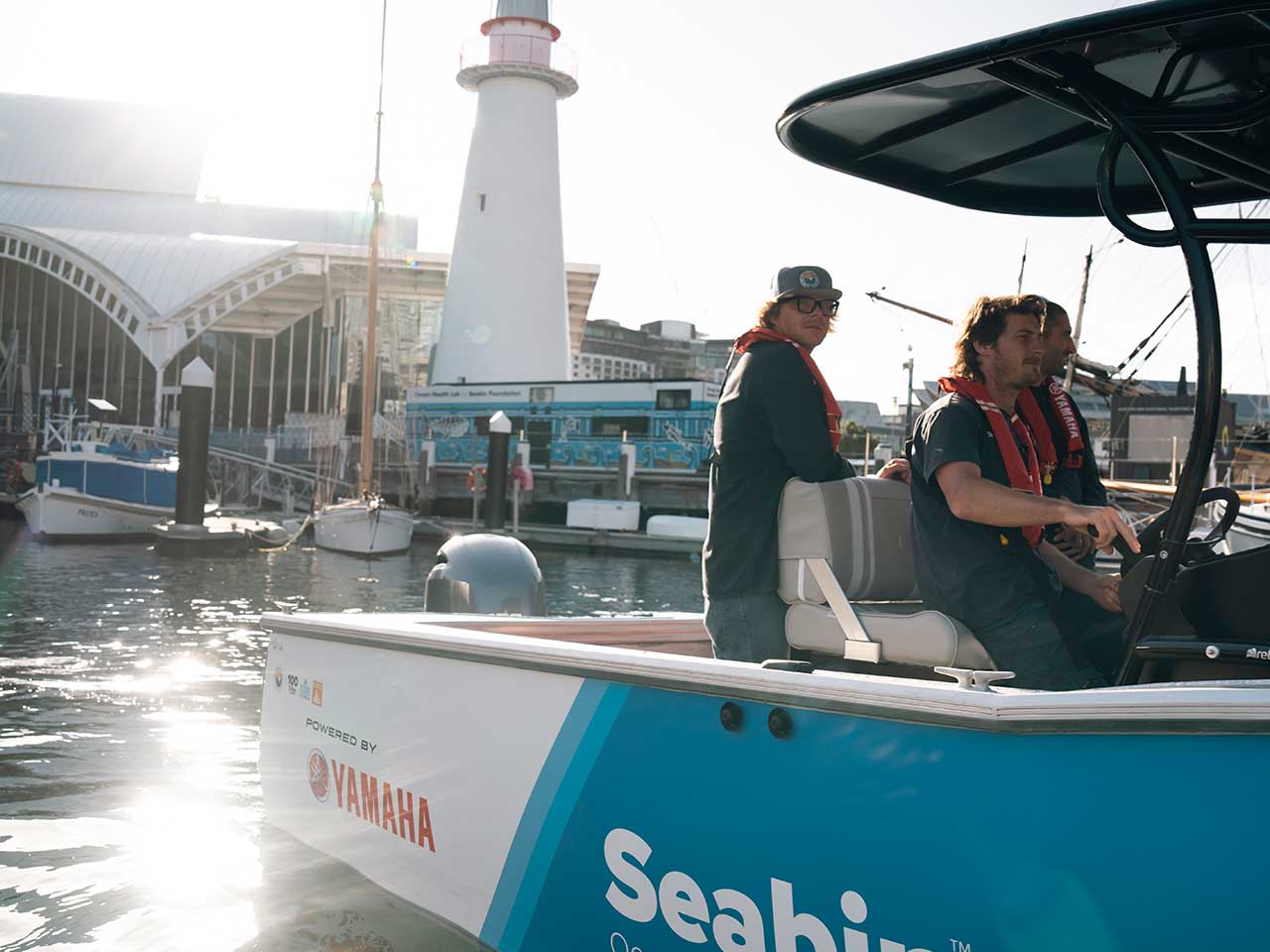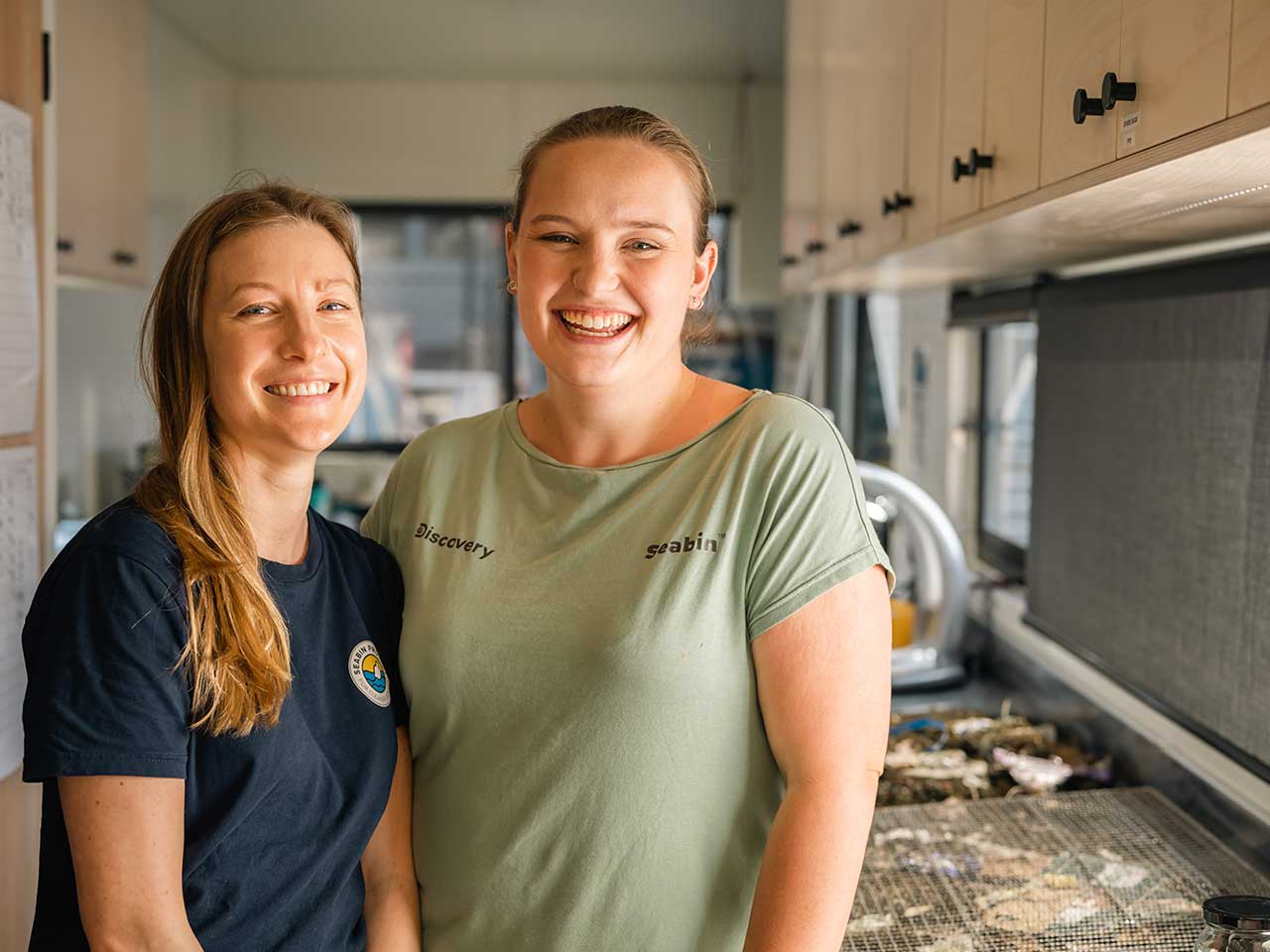Cleaner Oceans
It’s not every day you come across a business vision statement that reads “I want to go surfing without plastics, and the ultimate goal is to put ourselves out of business”, but for Pete Ceglinski from the Sydney-based Seabin Project, it’s his philosophy and the major reason he gets out of bed every day is to do his bit. Pete Ceglinski is on a mission to help eradicate plastics from our oceans. He calls it a 'business for good'.
As a lifelong surfer, Pete has witnessed firsthand how the intrusion of plastic – not only debris easily visible to the naked eye but also, microplastics – has become an acute issue in oceans all around the globe. And, of course, Australia is not immune.
“My first career was as a product designer," Pete reveals. "I was responsible for design engineering and commercialising plastic injection-moulded products. Some irony in that!” However, it was Pete’s second career as a boat builder for America’s Cup racing teams that started him on the Seabin journey. Travelling the world for 12 years he witnessed firsthand the increasing amount of trash in the water.
“So, Seabin is my third career,” Pete says. “It started with the lateral thought that if you have rubbish bins on land, then why not put them into the water? It was the most obvious thing in the world that no one had thought of," he adds. "A Seabin is very simple: it’s the cross between a garbage can and a pool skimmer. We put it in the water and skim the top 10mm of the surface for microplastics and plastic fibres. Water and rubbish come in, but the rubbish is trapped by a filter, while the water passes through the pump and back into the ocean.”
The Seabin Foundation was established in 2016 after a crowdfunding campaign raised a staggering $360,000, with most of that backing coming from mums and dads.
“Generating the seed capital to bring Seabin to life was the most humbling, beautiful experience in the world,” Pete reveals. “The video we used for crowdfunding went viral because people had never seen a rubbish bin put in the water before. It got more than a billion views across the internet and put us right in the spotlight.”
Pete’s vision for the Seabin project stretches well beyond the next few years, even the next decade, The 100 Smarter Cities program by 2050 is a classic case of mighty oaks from little acorns. “We figured if we can achieve what we have in Sydney, then we can also do it in LA,” explains Pete, “And If we can do it in Los Angeles, then we can do it in another city around the world, and so on.”
Reflecting the commitment of Yamaha Motor Company to its Corporate and Social Responsibilities, Seabin has aligned itself with Sustainable Development Goals (SDG) set out by the United Nations Sustainable Development Summit in 2015. Seabin is also officially recognised by United Nations Environment. “We align with Sustainable Development Goal 11, which is Life Below Water, as well as SDG 14 which is Sustainable Cities and Better Informed Communities,” explains Pete. “So if you have a more sustainable city and better informed communities, you are going to have less impact on the environment and less plastics in the water.”
Seabin also needed ongoing funding to ensure the longevity of the idea. While enthusiasm from all levels of government appears to have been lukewarm, the Seabin Foundation has managed to attract sponsorship from a variety of benefactors, including Yamaha Motor Australia.
Seabin’s Tom Batrouney explains that Yamaha’s major assistance with day-to-day operations is in the form of a Yamaha-powered boat provided by Yamaha Motor Australia through its Rightwaters Initiative.
“Yamaha’s support has really assisted our operations… and added to our efficiencies,” he reveals. “There are huge plans to expand our operations in Sydney Harbour… but we can’t do it alone: we need support from the bottom up and from the top down. The partnership between Seabin and Yamaha was a logical fit.”
Describing the association with Yamaha further, Tom explains the similarities that exist between the two companies. “Yamaha’s business is on the water, and we are also on the water, together we must support the environment that supports us.”
The first Seabin put into operation was commissioned in the south of France in 2017. This was followed two years later by the first unit installed in Australia at the National Maritime Museum, Darling Harbour. The number of Seabins in Sydney Harbour now totals 37, worldwide there is more than 1000 Seabins in use. The Sydney Harbour Seabins are emptied every 24 hours, making Seabin Foundation the only ocean clean-up group monitoring the water for plastics 24/7. The captured rubbish is not simply discarded. Every fortnight, a thorough data analysis is carried out on every Seabin catch. All the plastics captured are categorised for analysis to form trends and reports.
The daily haul of plastic items includes a wide range of products harmful to the environment, including fake grass and leaves, parking tickets, vaping products, toys, ropes, polystyrene and much more. The team of technicians often find items captured in the Seabins that leave them scratching their heads.
“At the beginning, we estimated we were going to be pulling out about 56 tonnes of marine debris from Sydney Harbour in the first two years,” Tom reveals. “We are currently sitting at 73 tonnes of debris, with 1.3b litres of water filtered.”
The design of the Seabin has evolved and improved over the years, with smart technology now integrated. “Now with version six we have a lot more capabilities, and we’ve worked out ways to tweak them so we are creating more powerful data,” Tom adds.
Tom also revealed that the new Seabin Oceans Lab - located at Darling Harbour's National Maritime Museum - has become a key part of Seabin's operations, helping to raise awareness of pollution in Sydney Harbour.
“The biggest thing that has stuck with me since I started at Seabin is to not assume that people know that rubbish in the water is a problem,” Tom explains. “One of our most important jobs is outlining that there is rubbish in the water. We work on the education from there."
Tom likes to say that we can all do something, and all our somethings can come together to create real change in the world.
For more information on the Seabin Project and the Seabin Foundation, visit www.seabin.io
To learn more about how Yamaha is acting responsibly and working towards its own Sustainable Development Goals, visit our About Us section.






















